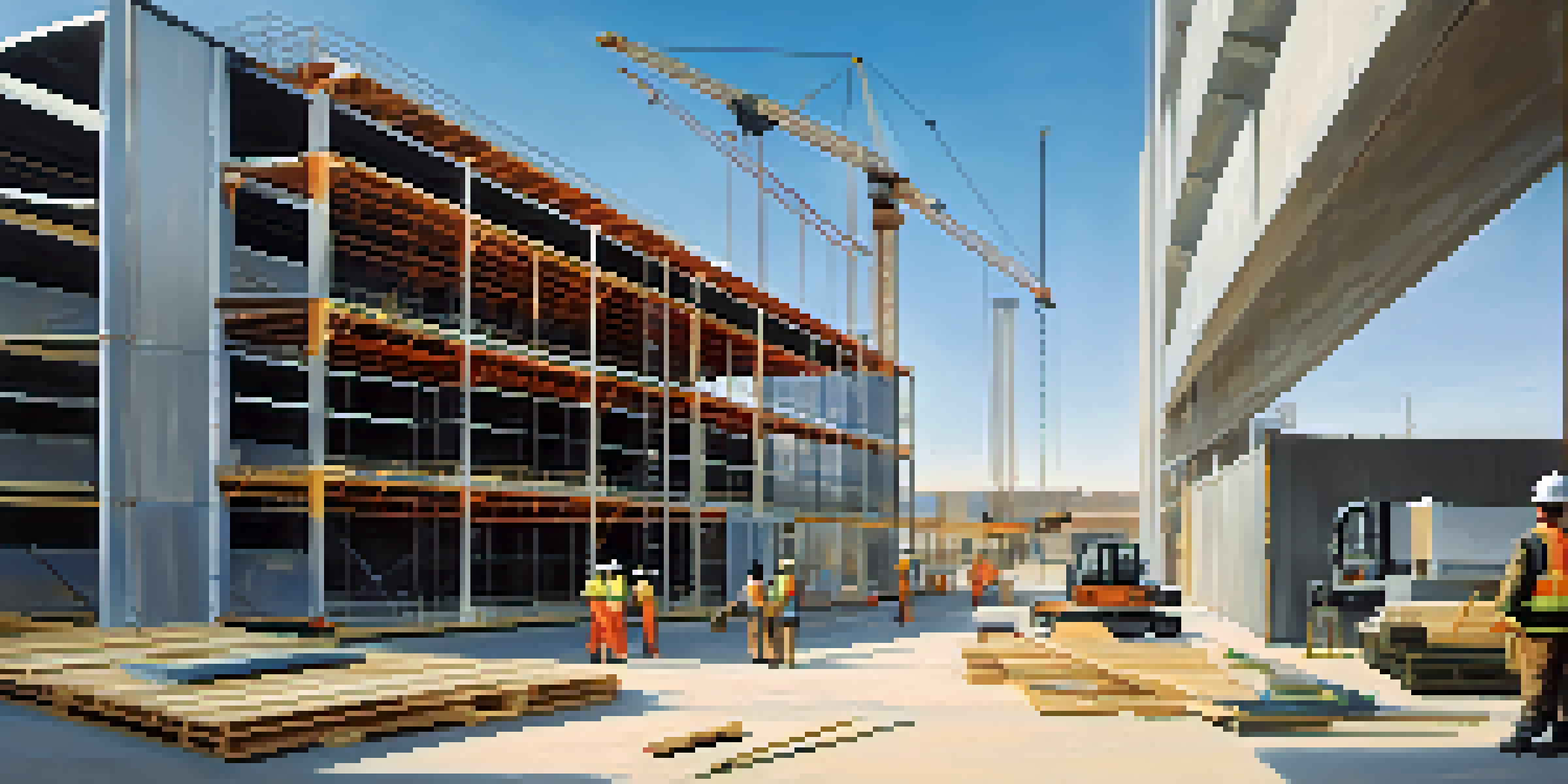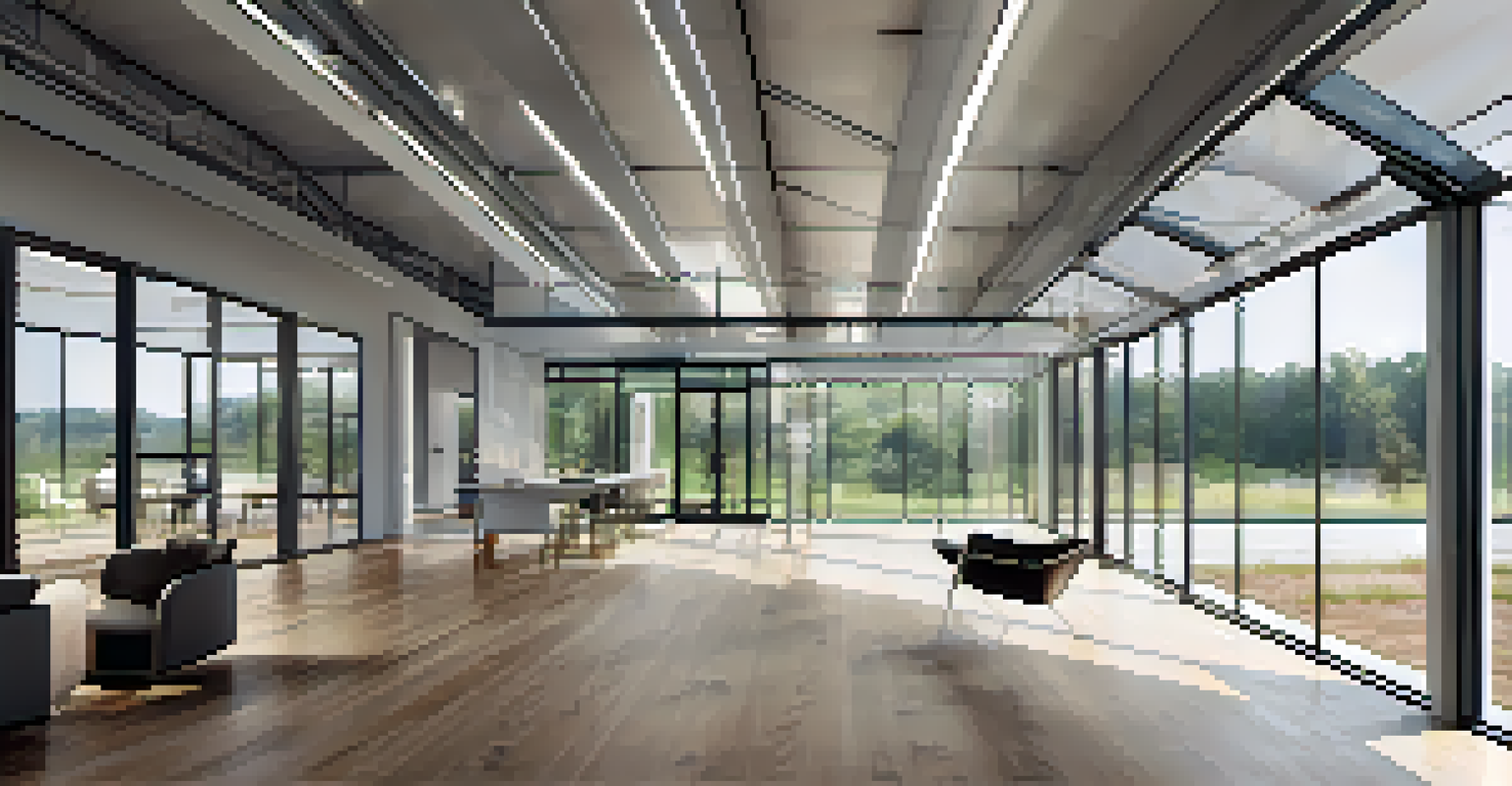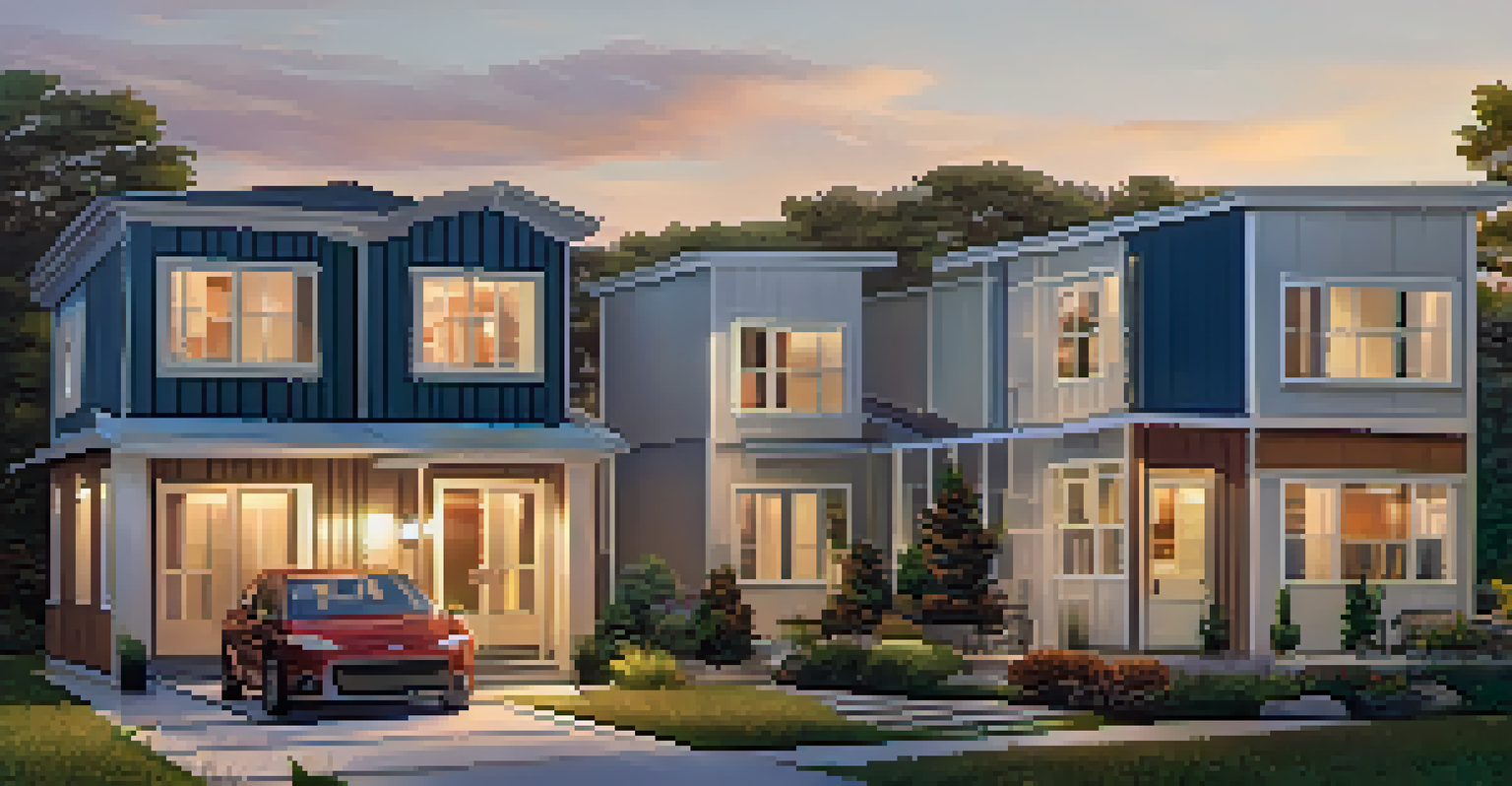The Advantages of Using Prefabricated Elements in Building

What Are Prefabricated Elements in Construction?
Prefabricated elements are parts of a building that are manufactured off-site and then assembled on-site. This process can include walls, floors, and roofs that are pre-made in a factory setting. By bringing these elements together on-site, construction can be quicker and more efficient.
The best way to predict the future is to create it.
Think of prefabricated elements like building with LEGO blocks, where each piece is crafted in a controlled environment before being put together. This method not only speeds up the construction timeline but also minimizes on-site waste and disruptions.
As construction technology advances, prefabrication has become a popular choice among builders looking to optimize their projects. Understanding these elements is crucial for anyone considering modern building methods.
Speed and Efficiency: A Game Changer
One of the most significant advantages of using prefabricated elements is the speed of construction. Since many components are built simultaneously in a factory, the overall project can be completed in a fraction of the time compared to traditional building methods.

Imagine a scenario where you can have your new home ready to move into in just a few months instead of years. This rapid turnaround not only benefits homeowners eager to settle in but also allows builders to take on more projects simultaneously.
Speedy Construction Benefits
Prefabricated elements significantly reduce construction time, allowing projects to be completed in months rather than years.
The efficiency gained from prefabrication means that construction schedules can be more predictable. This reliability can help avoid costly delays and keep budgets in check, making it a win-win for everyone involved.
Cost-Effectiveness: Saving Money in the Long Run
Cost savings are another compelling reason to consider prefabricated elements. With reduced construction time comes lower labor costs, as fewer workers are needed on-site for extended periods. Additionally, the controlled manufacturing environment helps reduce material waste.
Sustainability is no longer about doing less harm. It’s about doing more good.
Think of it like cooking a meal: when you have all your ingredients prepped and ready, the process is smoother and requires less time. Similarly, prefabrication streamlines the building process, leading to significant financial savings.
These savings can be particularly beneficial for developers and contractors who are always looking for ways to maximize their profit margins. In the long run, investing in prefabricated components can lead to a more cost-effective building project.
Quality Control: Built to Last
Quality control is another area where prefabricated elements shine. Since these components are manufactured in a controlled environment, they can be closely monitored and tested for quality throughout the production process.
Imagine the difference between a home-cooked meal and a dish prepared in a restaurant. In a restaurant, chefs can ensure that every ingredient meets high standards before serving. Similarly, prefabricated elements undergo rigorous quality checks to meet building codes and standards.
Cost Savings with Prefabrication
Using prefabricated components lowers labor costs and reduces material waste, leading to more cost-effective building projects.
This attention to detail means that prefabricated buildings often have fewer defects and issues than those constructed using traditional methods. Homeowners and builders alike can enjoy the peace of mind that comes with knowing their structure is built to last.
Sustainability: A Greener Choice
Sustainability is becoming increasingly important in construction, and prefabricated elements offer several eco-friendly advantages. The off-site manufacturing process reduces waste, as materials can be precisely measured and cut before reaching the site.
Picture a well-organized workshop where every tool and material is in its place, allowing for minimal waste. Prefabrication fosters that kind of environment, contributing to a smaller carbon footprint compared to traditional building methods.
Moreover, many prefabricated materials are designed with energy efficiency in mind, leading to buildings that consume less energy over their lifetime. This commitment to sustainability can appeal to environmentally conscious buyers and builders alike.
Flexibility and Customization Options
Another advantage of prefabricated elements is the flexibility they offer in design and customization. Builders can work closely with manufacturers to create components that meet specific aesthetic and functional needs, making unique designs possible.
Think of it as customizing your favorite sandwich with all the toppings you love. Just as you can choose what goes into your meal, prefabrication allows for a tailored approach to construction that is both practical and stylish.
Sustainable Building Practices
Prefabrication promotes eco-friendly construction by minimizing waste and often incorporates energy-efficient materials.
This flexibility can lead to innovative architectural designs that stand out from the crowd. Whether it's a modern office building or a cozy home, prefabricated elements can adapt to various styles and preferences.
Safety Benefits: A Safer Work Environment
Safety is paramount in construction, and prefabricated elements can contribute to a safer work environment. With less time spent on-site and fewer workers exposed to hazardous conditions, the overall risk of accidents can decrease significantly.
Imagine a construction site bustling with activity and potential hazards. Now picture a site where most of the heavy lifting is done off-site, allowing workers to focus on assembly rather than labor-intensive tasks. This shift greatly enhances safety.

Additionally, prefabricated components are often built to higher standards, which can further reduce the risk of structural failures. Ensuring the safety of workers and future occupants is a crucial aspect of any building project.
Conclusion: The Future of Construction
The advantages of using prefabricated elements in building are numerous and compelling. From speed and cost-effectiveness to sustainability and safety, these components represent a modern approach to construction that meets the demands of today's world.
As more builders and homeowners recognize the benefits of prefabrication, we can expect to see its continued growth in the industry. It's an exciting time for construction as new technologies and methodologies emerge.
In conclusion, if you're considering a building project, exploring prefabricated options could be a game-changer. Embracing this innovative approach can lead to a more efficient, sustainable, and safe building experience.